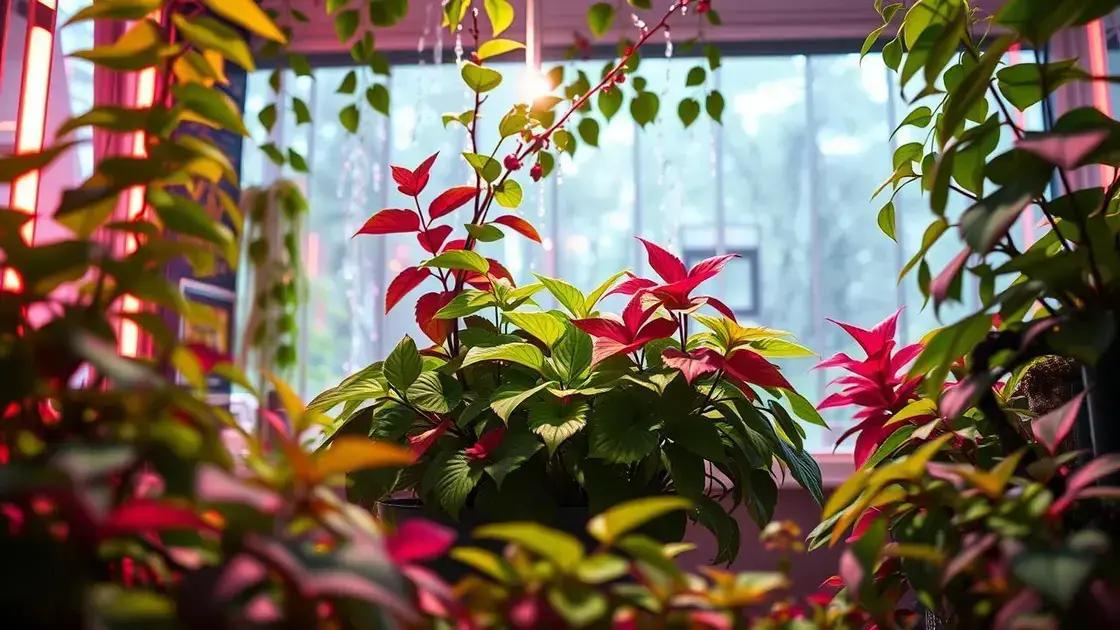How to care for an indoor ivy plant is more than just watering. It involves understanding its unique environment and its specific needs. This popular houseplant thrives when given the right care. In the following sections, we’ll explore how simple adjustments can lead to beautiful, healthy vines.
Table of Contents
ToggleUnderstanding the perfect light for your ivy
Understanding the perfect light for your ivy is crucial for its health and vitality. Indoor ivies, particularly varieties like English ivy, thrive in bright, indirect sunlight. If you don’t provide the right lighting conditions, you may notice leggy growth or yellowing leaves, signaling that adjustments are needed.
Optimal light conditions for ivy plants
- Place your ivy near east or west-facing windows for the best results.
- Avoid placing it in south-facing windows where direct sunlight can scorch the leaves.
- Artificial lighting can supplement natural light if windows are insufficient.
Sign of too low light
If your ivy is not receiving enough light, it might display certain characteristics:
- Stunted growth or leggy appearance where the leaves are spaced far apart.
- Leaves may turn yellow and drop off.
- New growth might become sparse, indicating a lack of vigor.
Signs of too much light
Conversely, overexposure to direct sunlight can lead to:
- Brown tips and edges on the leaves.
- Leaf scorch, where the colors fade or become pale.
Tips for maintaining perfect light for your ivy
Here are some practical tips to ensure your ivy gets the right amount of light:
- Rotate your ivy every few weeks to ensure even growth.
- Use sheer curtains to diffuse harsh sunlight.
- If using artificial lights, aim for 12-14 hours of light daily.
Common lighting mistakes
Many indoor gardeners make mistakes when positioning their ivies. Here are a couple to avoid:
- Assuming a north-facing window provides adequate light.
- Overlooking seasonal changes in sunlight exposure.
For more insights on lighting and other crucial aspects of houseplant care, consider exploring indoor gardening techniques.
Essential watering tips for indoor ivy plants

Essential watering tips for indoor ivy plants are key to keeping your ivy healthy and thriving. While ivy is generally forgiving, it is essential to understand its specific watering needs to avoid issues like root rot or dehydration.
Understanding watering frequency
- Water your ivy every 1-2 weeks, depending on environmental conditions.
- During growing seasons (spring and summer), you may need to water more frequently.
- In winter, reduce watering as the plant’s growth slows down.
How to check if your ivy needs water
Here are some practical steps to determine when to water:
- Stick your finger about an inch into the soil. If it feels dry, it’s time to water.
- Watch for drooping leaves, which can indicate that the plant is thirsty.
- Yellowing leaves can signal overwatering or underwatering, so adjust accordingly.
Watering techniques
While watering, keep the following tips in mind:
- Use room temperature water to avoid shocking the roots.
- Water until you see excess draining out of the bottom of the pot.
- Ensure your pot has drainage holes to prevent water from pooling.
Common mistakes to avoid
Avoid these typical pitfalls that can hinder your ivy’s growth:
- Watering on a strict schedule without considering changing environmental conditions.
- Overestimating how much water your plant actually needs.
For more information on effective plant care and strategies, visit exploring indoor gardening techniques.
Soil and fertilization practices for lush ivy growth
Soil and fertilization practices for lush ivy growth are vital for ensuring your indoor ivy thrives. Choosing the right type of soil and providing appropriate nutrients will help your plant flourish and produce vibrant foliage.
The best soil mix for indoor ivy
- Use a well-draining potting mix to prevent waterlogging.
- A blend of peat moss, perlite, and vermiculite works effectively.
- Consider ready-made mixes specifically formulated for tropical houseplants.
Optimal pH levels for ivy soil
IVy prefers slightly acidic to neutral pH levels. Aim for:
- pH range of 6.0 to 7.0 for ideal nutrient uptake.
- Regularly test the soil with a pH meter or test kit.
Fertilizing your ivy plant
When it comes to fertilization, timing and the right type of fertilizer are crucial:
- Feed your ivy every 4-6 weeks during the growing season (spring and summer).
- Use a balanced liquid fertilizer diluted to half-strength for best results.
- A slow-release fertilizer can also work well, providing nutrients over time.
Signs of nutrient deficiencies
Pay attention to your ivy for any signs of nutrient deficiencies, such as:
- Yellowing leaves that indicate nitrogen deficiency.
- Brown leaf edges suggesting a lack of potassium.
- Pale or greenish stems pointing toward inadequate phosphorus.
To enhance your plant care knowledge, consider exploring indoor gardening techniques for further insights.
In conclusion
Caring for your indoor ivy plant requires a comprehensive approach, from understanding its lighting needs to mastering watering, soil, and fertilization practices. By following the essential tips outlined in this guide, you can create an optimal environment for your ivy to thrive, resulting in lush, vibrant growth. Remember that each plant is unique, and observing your ivy will help you adapt your care accordingly. For additional insights and community support, check out these tips on enhancing your indoor garden.

